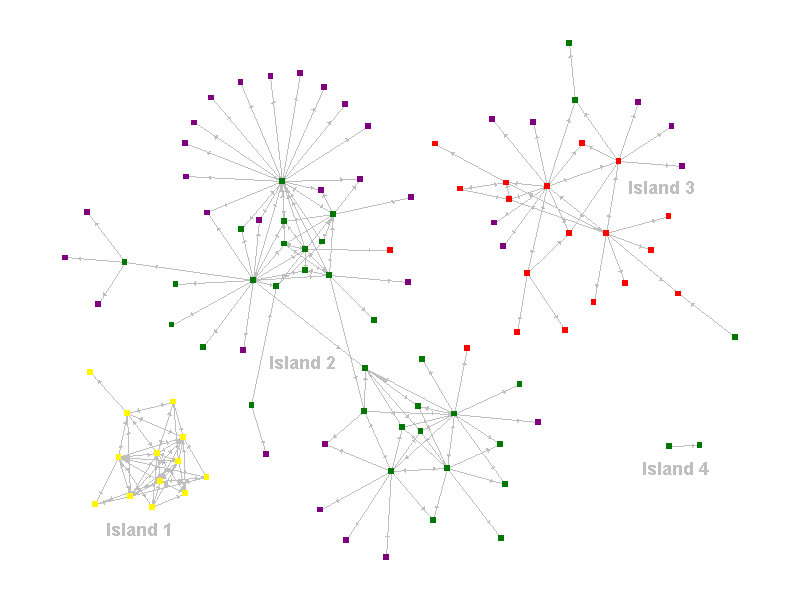 |

Innovation Happens at the Intersections
|
Working in isoloated clusters is fine if the world around you is not changing. Bridiging clusters allows everyone to learn and exchange perspectives and ideas. Connections create cross-fertilization and innovation usually follows. Each node in the network above represents an employee in this Big Pharma research organization. A gray line is drawn between two employees if they exchange advice and ideas (their formal work relationships were different). Node colors designate departmental membership. This research lab was the result of several mergers. In all, three companies combined, over time, to create this merged organization. The relationships formed in those 3 companies are still in place -- islands 1, 2 and 3 represent the three former firms. Island 4 are two new hires. One of our clients, a large consulting firm, was hired by this research organization to help them jumpstart their innovation. After the merger, new products from the lab had slowed to a trickle. After seeing the network map above, lab management was shocked, but not surprised -- old boundaries die hard. The lack of innovation was apparent. Very few intersections, very little innovation. |
The intervention taken by the client was very simple -- build bridges between the islands. In addition, a few employees were transferred between islands -- bringing their network ties with them and helping intersect the islands. Although this was an easy intervention, it was not a quick solution. Human networks are more difficult to build than computer networks. Computers require the same data routing protocol to connect and start communicating, while humans require the difficult and messy social routing protocol of trust. This project, like many others follow our two step process:
Following this mantra, of first mapping and then molding & morphing the network, allows change to happen over time. Awareness before action! |
About | Software | Training | Consulting | Case Studies | Blog | Contact
Copyright © 2008, Valdis Krebs